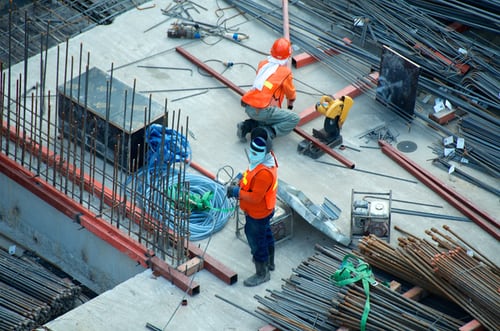Winter safety tips for construction workers
Construction sites are one of the most dangerous workplaces in the UK. They are filled with hazardous areas, toxic substances and heavy machinery. However, in the winter months, construction sites are faced with yet another risk factor: the weather.
Gale force winds, snowstorms and wet conditions can make construction work more dangerous and less enjoyable. Construction workers have to brace these weather conditions and work through freezing temperatures. Everyone on site must be thoroughly trained in health and safety procedures. Cold weather can cause injuries, sickness and mistakes on site.
Here are a few ways you can keep your construction workers safe through the winter.
Wear appropriate clothing
Construction workers need to be kitted out with the correct clothing. They need appropriate clothing such as the Milwaukee heated jacket to keep them warm and clothing made from impermeable materials. They should have hard-wearing boots with a steel-capped toe for extra safety.
Employees should wear plenty of loose layers in the winter to trap the heat. They can always remove layers if they get too hot or one layer becomes wet. They can put these layers back on when work activities diminish and their body temperature cools down.
Regular breaks
In cold and wet conditions, construction workers should have regular breaks to warm up. You could have a break room on site for people to dry their clothes and eat lunch. Working in a colder environment is much more challenging and requires more downtime.
Avoid going to work with the flu
It’s also cold and flu season in the winter months. If anyone has a cold or the flu, they should stay at home and recover. Do not encourage your employees to come into work with sickness. They could infect the entire team and drastically impact the health of your team.
This is especially important with the pandemic still looming in the UK. If anyone presents with covid symptoms, they should remain at home and follow government advice.
Provide lighting
The days are much shorter in the winter months. You need to provide lighting on-site, so everyone can see what they are doing. Lights on-site will drastically reduce the chance of people falling over items and injuring themselves.
Shield areas from the elements
You need to shield parts of the worksite from rain, wind and snow. You might need to seal areas with plastic sheeting to keep them dry. At the start of the project, you should identify which areas and materials need protection from the weather.
Inspect vehicles
Run routine maintenance checks on the vehicles on-site to make sure they are working efficiently. You can catch any minor problems early on and stop them from escalating. Store some winter essentials in every van, including an ice scraper, de-ice spray and shovel.
Everyone on your construction team should be prepared and trained for the winter months ahead.

